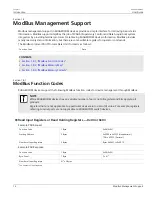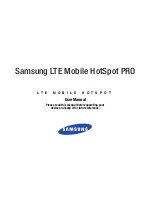
RUGGEDCOM ROS
User Guide
Chapter 1
Introduction
Features and Benefits
1
Introduction
Welcome to the RUGGEDCOM ROS v4.3 Software User Guide for the RS900. This Guide describes the wide array of
carrier grade features made available by ROS (Rugged Operating System).
CONTENTS
•
Section 1.1, “Features and Benefits”
•
Section 1.2, “Security Recommendations and Considerations”
•
Section 1.3, “Supported Networking Standards”
•
Section 1.4, “Port Numbering Scheme”
•
Section 1.5, “Available Services by Port”
•
Section 1.6, “SNMP Management Interface Base (MIB) Support”
•
•
Section 1.8, “ModBus Management Support”
•
Section 1.9, “SSH and SSL Keys and Certificates”
Section 1.1
Features and Benefits
The following describes the many features available in RUGGEDCOM ROS and their benefits:
•
Cyber Security
Cyber security is an urgent issue in many industries where advanced automation and communications networks
play a crucial role in mission critical applications and where high reliability is of paramount importance. Key
RUGGEDCOM ROS features that address security issues at the local area network level include:
Passwords
Multi-level user passwords secures against unauthorized configuration
SSH/SSL
Extends capability of password protection to add encryption of passwords and data as they
cross the network
Enable/Disable Ports
Capability to disable ports so that traffic cannot pass
802.1Q VLAN
Provides the ability to logically segregate traffic between predefined ports on switches
SNMPv3
Encrypted authentication and access security
HTTPS
For secure access to the Web interface
•
Enhanced Rapid Spanning Tree Protocol (eRSTP)™
Siemens's eRSTP allows the creation of fault-tolerant ring and mesh Ethernet networks that incorporate
redundant links that are
pruned
to prevent loops. eRSTP implements both STP and RSTP to promote
interoperability with commercial switches, unlike other proprietary
ring
solutions. The fast root failover feature
of eRSTP provides quick network convergence in case of an RSTP root bridge failure in a mesh topology.
















































